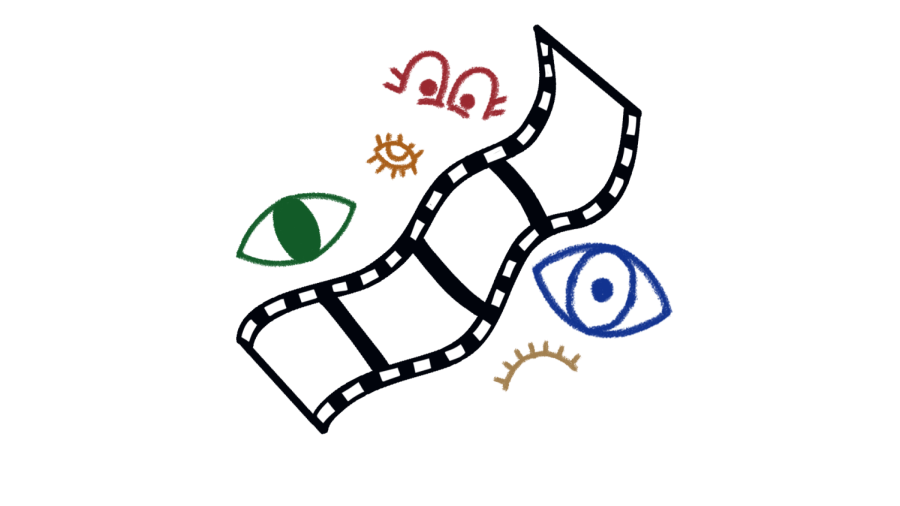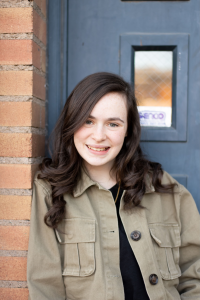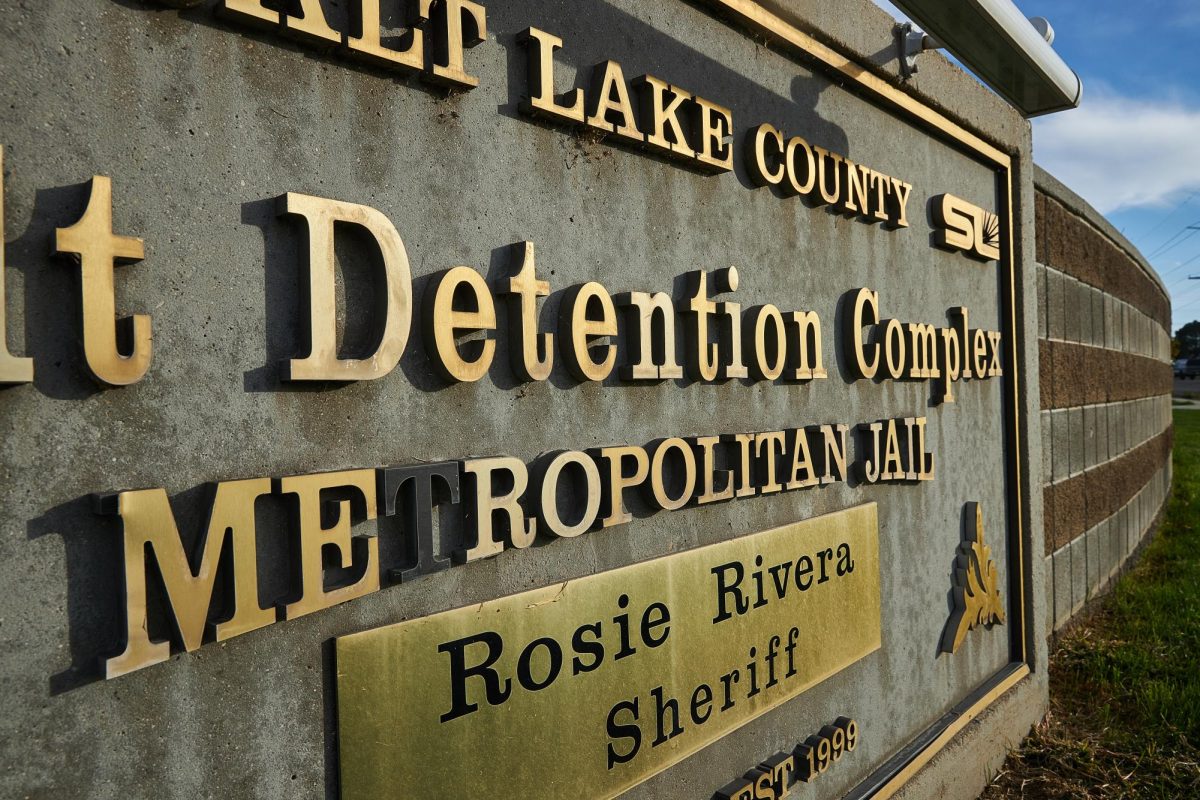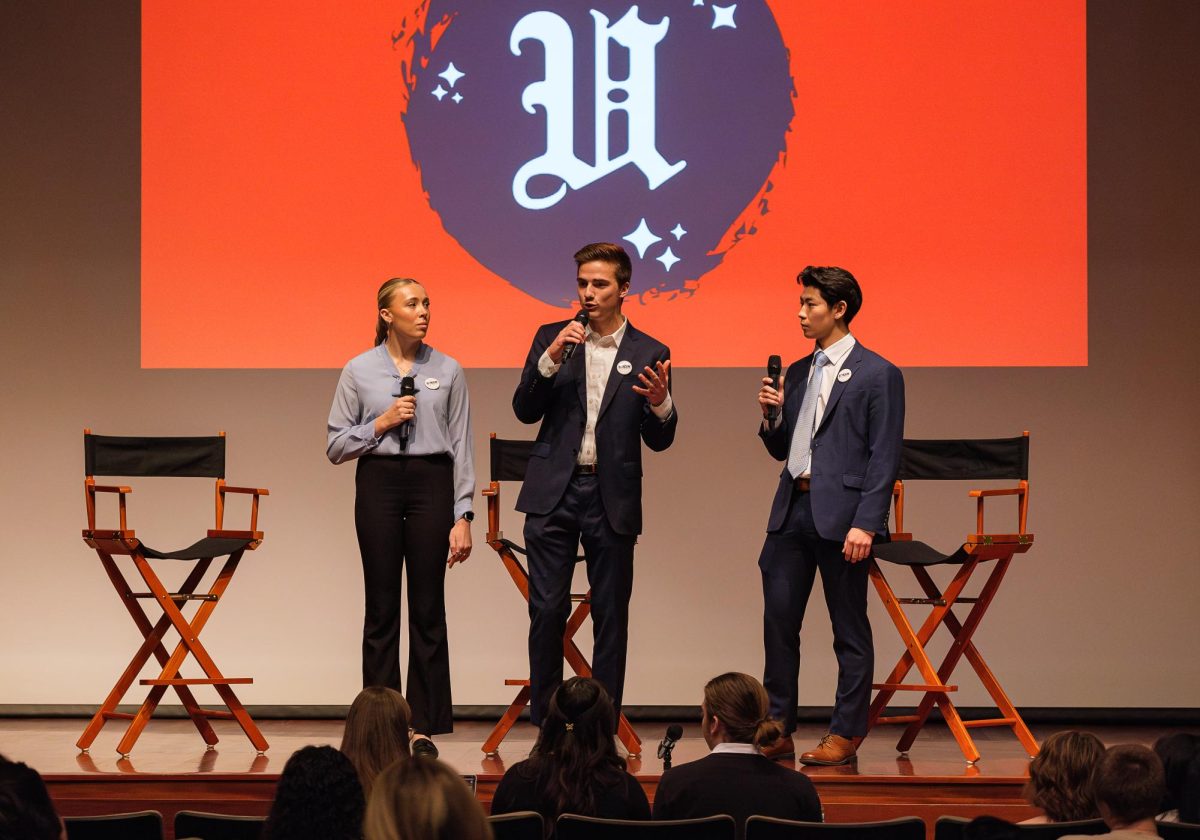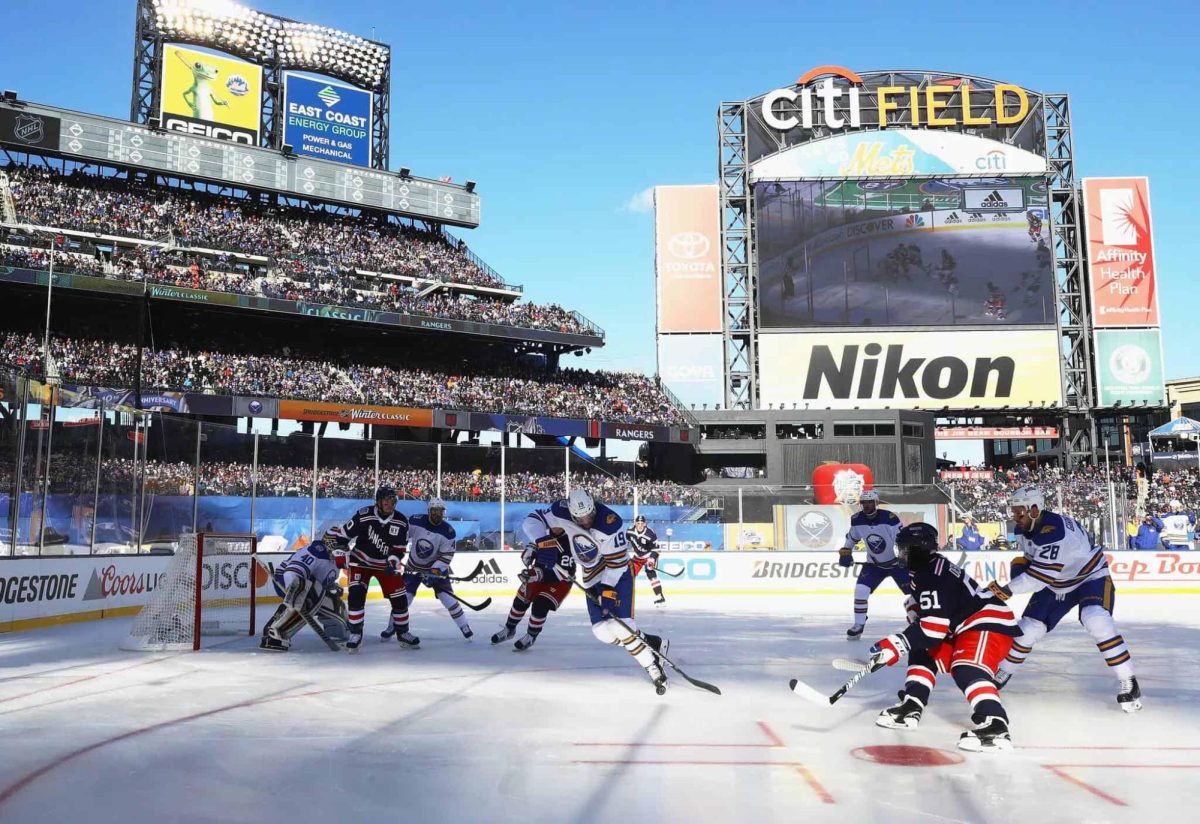What I See When I Look At a Movie Screen
(Design by Madelyn Foulger | The Daily Utah Chronicle)
February 6, 2023
I cannot remember a time when I was not in love with movies.
As a little girl, I would spend the day with my grandparents while my parents worked. My paternal grandmother is a huge movie buff, a fan of Classic Hollywood. From a young age, she would show me old movies. In addition to a healthy diet of Disney movies, there were movies that starred James Stewart, Audrey Hepburn, Gene Kelly, Doris Day and Judy Garland, among others. My love of movies is entirely due to my grandma, the movies that she showed me and the way she talked about them.
‘North By Northwest’
One day when I was four, my grandma sat me down in the living room and showed me the “Crop Duster Scene” from Alfred Hitchcock’s “North by Northwest.” I was instantly transfixed. As I watched Cary Grant dive onto the dirt ground to only narrowly avoid the crop duster my little body shook with adrenaline and excitement. I felt as though I was in danger. In all my four years I had never seen anything so thrilling.
My grandma had determined that the 136-minute long “North By Northwest” would be rather boring for a four-year-old, and so, I was only shown that particular sequence. I would beg to watch Grant get chased by a crop duster over and over again.
One day, she let me watch the ending, when Grant and Eva Marie Saint escape the villain’s henchmen by climbing across Mount Rushmore. I already knew about Mount Rushmore and, as it was rather high and steep, I asked my grandma how they kept the actors safe from falling. My grandma answered that they had not filmed on the actual Mount Rushmore, but on a set made to look like it. This was my first lesson on movie magic.
As we watched these scenes together, my grandma told me that “North By Northwest” was directed by Hitchcock. He made “scary movies” that I wasn’t allowed to watch yet, and was known as “The Master of Suspense.”
Grant was a movie star and the epitome of sophistication, according to her. “This is the only time you ever see Cary Grant dirty in a movie,” my grandma told me once as we watched the crop duster scene. Hitchcock and Grant made other movies together: “Suspicion,” “To Catch a Thief” and “Notorious.” Through these conversations, I learned that actual people made movies. They didn’t just appear whenever you turned on the television. My grandma would do this during all of the movies that we watched. She would tell me all the little bits of trivia that she knew.
Later, during my early elementary school years, I found the television program “At the Movies with Ebert and Roeper.” I was too young to know how dorky and weird it would be for me to watch it. All I knew was there were people talking about movies and I loved movies.
I would listen to Roger Ebert describe the plot of a movie I was much too young to actually watch and fill in the blanks, imagining entire scenes and pieces of dialogue. I would do the same thing as I devoured the movie encyclopedias at the public library and searched for “Top 10” and “Greatest of” lists, desperate to find more movies to watch. Hearing and reading the plot descriptions of movies was rather like standing in front of a swinging door through which I could catch fleeting glances of the unknown of adulthood. There were experiences, entire ways of being, that were foreign to me. Almost to the point of feeling like a parallel dimension. One I could maybe get to through movies.
I was an extremely nervous child. It seemed to me that outside of my house there was a lot to be scared of: abuse, violence, illness, death, murder, war. Maybe if I could see these things first in a movie it wouldn’t feel so overwhelming.
Experience Other Ways of Living
T.S. Eliot once said, “We read many books, because we cannot know enough people.” I feel that the same goes for movies. I will only have one life, and in that life, I will only be able to be myself. I will only be able to be raised how I was raised, live in the places that I live, speak the languages that I speak, see the sights that I see and have the experiences that I experience. Movies allow me to step outside of myself and learn about how other ways of living. Great movies let me in and allow me to learn a little about what it’s like to be a different nationality, a different sexuality, a different gender, a different age, a different profession, and to have different hopes, dreams and loves.
Mabel Longhetti from “A Woman Under the Influence” has an extremely different personality from myself, an extremely different way of living and set of circumstances. However, I was able to spend 155 minutes with Longhetti and get to know her. I have never actually had my bike, upon which my job and entire livelihood depended, stolen. Yet, the emotions that I felt while watching “Bicycle Thieves” were so strong that it seemed like a good approximation of what it would be like.
I live in Salt Lake City and not on a block in Bed-Stuy. Yet, the world of “Do the Right Thing” was so vividly detailed that by the third act I was emotionally reacting as though I was watching people I had known my entire life. As Sarah Sinwell, an associate professor in the Film and Media Arts Department at the University of Utah, explained, “There’s so many different cultures, and identities. There are so many different cultures that can be represented [in movies]. Like ‘Roma’ — after watching ‘Roma’ you have a completely different idea of Mexico, even if you had visited the country.”
Not only can great movies teach you about the world, but the very act of watching a movie connects you to others.
“Anyone can go and see the same movie, anywhere,” said Andrew Patrick Nelson, chair of the department of Film and Media Arts at the U. “You don’t have to have access to a theatre or a concert hall or a recital hall. Movies were the great equalizer, the great democratizer.”
Once I walk into the movie theater I sit among strangers. As we watch the movie, people that I have never met before in my life feel the same things as me. They laugh at the same jokes and cry at the same moments. The same phenomenon occurs with older movies. When I watch “Duck Soup,” I think about a young woman in 1933 laughing at the same joke as I am right now in 2022.
Movies liberate me from myself and the limitations of my knowledge and experiences. Good movies, really good movies, expose me to the world and connect me to other humans.
Where to Start Your Movie Journey
Here are ten movies that over my lifetime have made a big impact. Either through teaching me more about the world, expressing an emotion I wouldn’t otherwise be able to or just bringing me joy.
“Singin’ in the Rain“ (1952), directed by Stanley Donen and Gene Kelly: This is the movie I have probably seen the most in my life. The levitational joy I get when watching “Singin’ in the Rain'” is indescribable. It’s the happiest movie ever made. I envy anyone who gets to watch Kelly dance the title number for the first time.
“Beauty and the Beast” (1991), directed by Gary Trousdale and Kirk Wise: If you asked five-year-old Megan Fisher what her favorite movie was she probably would have said, “Belle.” It was a childhood favorite of this brown-haired girl who loved to read. The movement of the camera gliding down from the chandelier of the ballroom to the Beast and Belle waltzing makes my heart do a little flip every single time.
“The Umbrellas of Cherbourg” (1964), directed by Jacques Demy: If I could choose any movie to live in, it would be this one, surrounded by the bright, candy colors and Michel Legrand‘s achingly romantic score. From the opening sequence with “Generique” playing over a top-down shot of umbrellas walking by in the rain, my heart belonged to this movie.
“La Strada” (1954), directed by Federico Fellini: The first international film I ever saw. My first movie with subtitles. For that reason even a stinker would have been important part of broadening my filmic horizons, but luckily it was “La Strada.” “La Strada” feels both of this world and not. The dusty roads captured by the movie are recognizable, but the characters belong to a folktale. It’s whimsical, bittersweet and aching. Giulietta Masina’s heartbreaking turn as Gelsomina is my favorite performance ever committed to celluloid.
“The Seventh Seal” (1957), directed by Ingmar Bergman: This film showed me that movies could say important things, not only about life but about death. It taught me that movies didn’t have to confine themselves to reality, but could visualize metaphors, play with time and tell a story not just through the character’s interactions, but through the emotions created by a collection of otherwise unconnected images.
“The Godfather” (1972), directed by Francis Ford Coppola: Every time I watch “The Godfather,” there’s something new for me to notice — a character whose story I hadn’t paid attention to before, a theme to parse through, an expression on Al Pacino’s face that I hadn’t seen. Instead of becoming stale and dull, “The Godfather” becomes richer each time.
“Amadeus” (1984), directed by Miloš Forman: A masterpiece with all the right notes. The first time I watched “Amadeus” as a horror movie, with Antonio Salieri acting out all of my worst nightmares concerning my creative hopes. With each subsequent viewing it tells me something more about art, creativity and human nature. It’s a lot funnier than you would imagine a three hour period epic about Wolfgang Amadeus Mozart to be.
“Jeanne Dielman, 23 quai du Commerce, 1080 Bruxelles” (1975), directed by Chantal Akerman: Like “The Seventh Seal,” watching “Jeanne Dielman” expanded my idea of what a movie could be. “Jeanne Dielman” is not a movie that you could just pop in on a Friday night after a long day’s work, but in the right mindset it’s incredibly rewarding. I couldn’t stop thinking about if for months after.
“The Apu Trilogy” (1955, 1956 and 1959), directed by Satyajit Ray: I am not a young boy growing up in turn-of-the-century Bengal, but through “The Apu Trilogy” I get to learn a little bit about what it would have been like. Yet, the moments that really stick out to me are the ones that I recognize from my own life — the parents talking about troubles late at night when they think the kids are sleeping, the relationship between family members, the excitement of fulfilling dreams and the soul-crushing pain of grief.
“Jaws” (1975), directed by Steven Spielberg: After “Singin’ in the Rain,” my favorite movie of all time. I think it’s really scary when the theme music plays, but the shark is somewhere underneath the water. You can’t see it! Where is he???


